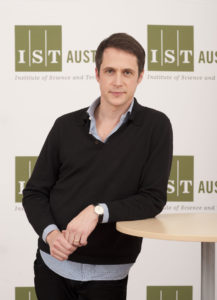May 23, 2016
Carl-Philipp Heisenberg elected as EMBO member
IST Austria Professor receives recognition for research excellence • Total of four distinguished researchers at IST Austria

IST Austria Professor Carl-Philipp Heisenberg has been elected to European Molecular Biology Organization (EMBO) membership. His election by the most prestigious molecular biology network to EMBO Membership recognizes his outstanding contributions to cell and developmental biology. Located in Heidelberg, EMBO supports talented researchers at all stages of their careers, stimulates the exchange of scientific information, and helps build a top research network in Europe, where scientists can achieve their best work in the life sciences.
So far, more than 1700 of the best researchers in Europe and around the world have been elected EMBO Members and Associate Members. Each year this community convenes to elect new Members and Associate Members to life-long membership; this ensures that EMBO is represented by the most excellent researchers in the life sciences. In the annual election for 2016, a total of 58 new Members and Associate Members have been selected. Of the 30 EMBO members conducting research in Austria, four are from IST Austria: Nick Barton, Michael Sixt, Jiri Friml, and Carl-Philipp Heisenberg.
Carl-Philipp Heisenberg studied Biology at the Ludwig Maximilian University of Munich and finished his PhD in 1996 at the Max Planck Institute for Developmental Biology in Tübingen in the group of Nobel Laureate Christiane Nüsslein-Volhard. After performing postdoctoral studies at King’s College London/University College London, he returned to Germany in 2000 to become Emmy Noether professor and group leader at the Max Planck Institute of Molecular Cell Biology and Genetics in Dresden. In 2010 he joined IST Austria as professor.
Heisenberg is interested in the molecular and cellular mechanisms underlying morphogenesis in vertebrate development using zebra fish embryos as a model system. Adapting the use of different biophysical tools such as high-resolution two-photon confocal imaging of single progenitor cells and atomic force microscopy in collaboration with other groups, he provides important insights into more physical aspects of cell behavior. His approach to morphogenesis is mathematical and physical and therefore special in combining a highly quantitative and theoretical viewpoint of problems in cell and developmental biology.



